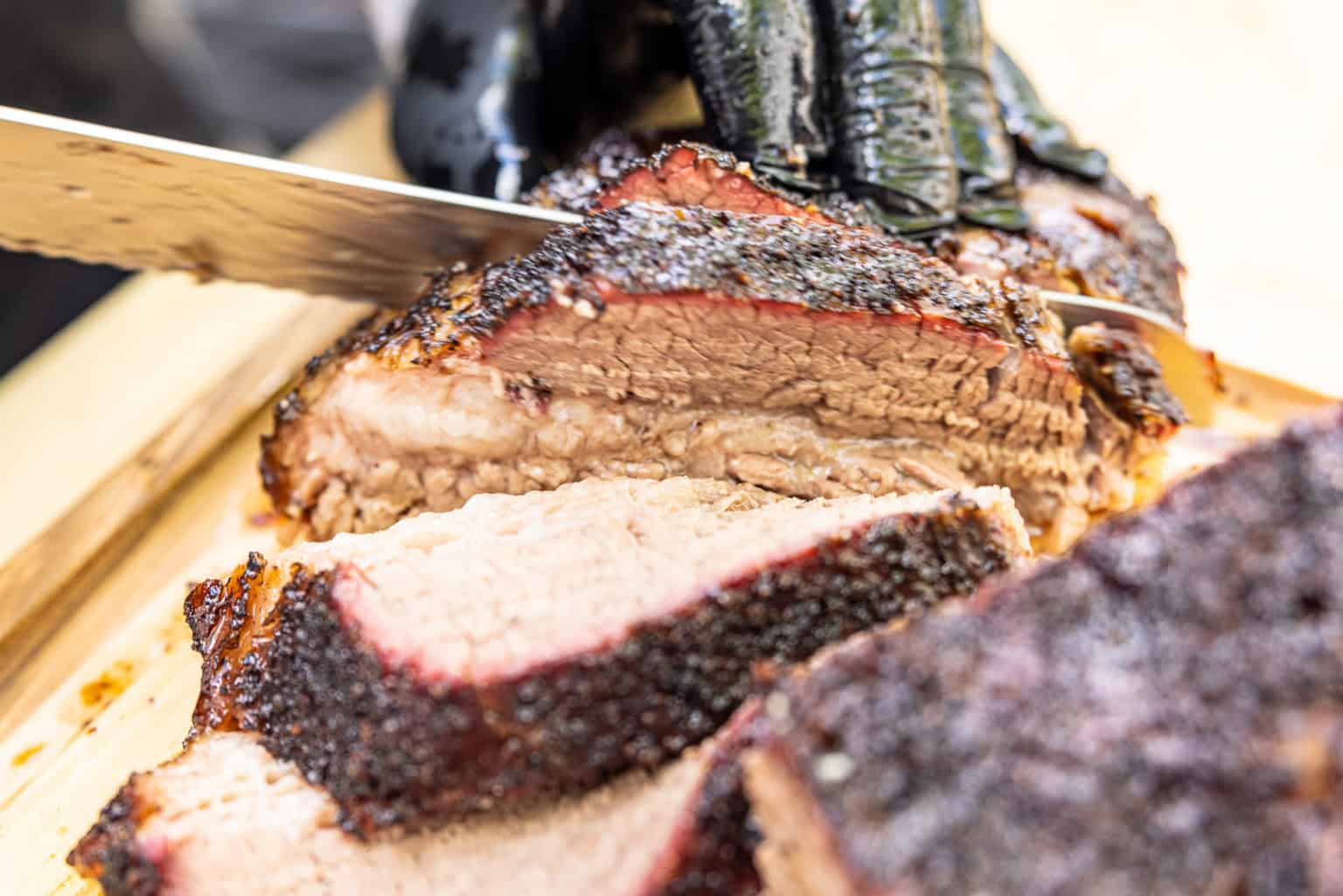


Now even though I attended Cookshack Cooking School, I completely forgot what they had taught us about quality of meats. CookShack was on there and so was Paul Schatte, from Head Country. Go back to my room and wouldn't you know that there in my hotel room is OKC Magazine, filled with the whole Mag dedicated to Barb Q. So I'm in OKC at the OU-OSU baseball game. Hope this helps a little,and I'd still put money on the overcooked. Some folks will even slice at less of an angle,than straight across the grain. Pushing straight down,rather than a sawing stroke,can help. Sometimes a crusty brisket,that breaks up,does better with an electric knife.įor comps,sometimes, overdone slices better with a Granton edge. The closer to room temp you slice,the easier ,for a done brisket. We tend to open the foil gradually,awhile before slicing,as said above. We rarely have a brisket fall apart,and even more rarely at 190*-even prime. Nothing about cooking at 225* that should hurt it,but you don't say size and total amount of time.Īlso mentioned is, are your therms correct,and what grade brisket are we talking?Īre you only foiling after you finish cooking,and what else is in the foil?Īs mentioned,the hold is to allow it to cook a little more,even while the temps are declining,and hopefully to pull back and redistribute some juices. Well,don't know about that guru thing,but we have cooked a few. Good luck and have fun with it, even if those sloppy joes are pricey, they should be really tasty. In this case, you're going to far on the tender side. More resistance, tougher meat, less resistance, more tender meat. As you gain experience with more and more briskets, the resistance will tell you more about the texture of the meat than the temperature reading on the thermometer. When you cook a brisket that you are happy with, take note of the resistance you feel when you stick your thermometer into the brisket. So, 190º on one brisket won't necessarily yield the same results as 190º on another. They can vary in fat content, moisture, size, how they've been trimmed, etc. One more thing to keep in mind is that briskets are not all alike. Again, pulling the meat off the smoker earlier would help with this. Falling apart brisket is a sign that it's overcooked.Īlso, how are you holding the brisket after cooking it? If you pull the brisket at 190º, and the immediately do the wrap in towels and place in a cooler thing, the internal temperature of the meat will continue to rise, continuing the cooking process. As a result, you should always cook your brisket over low heat for the specified amount of time.Wheels has a good suggestion with pulling the meat at a lower temp. If you cook your brisket for an extended period of time, it becomes dry, mushy, and tasteless. Overcooking a brisket does nothing to improve its texture or flavor. The heat of your cooker largely determines the length of time the brisket should be wrapped, so keep an eye on it and don’t let it get ahead of you. It will also cut down on the length of time it takes to cook.īefore wrapping, the inside temperature in the center of the flat should be around 150☏. Also, you can use foil or parchment paper to keep your brisket from overcooking because wrapping is a great way to get a more consistent result. The best way to gauge doneness is through an internal temperature. The sauce will assist in disguising the overdone flavor and make eating it more enjoyable. The ideal method is to thinly slice the brisket and serve it with plenty of barbecue sauce. The third sign is that the meat thermometer is put into the center of the brisket and reads over 210☏ (99☌).ĭo not be alarmed if you notice any of these indicators.Īn overcooked brisket can still be salvaged. If you can cut through the brisket with no wiggle and resistance, it’s been cooked too long. Second, If your brisket is too firm and easy to cut through with a sharp knife, it’s overcooked.

If you pierce the brisket in the middle and the liquid comes out clear, it’s overcooked. The first sign is that the brisket fluids are clear rather than myoglobin-red or pale pink.


 0 kommentar(er)
0 kommentar(er)
